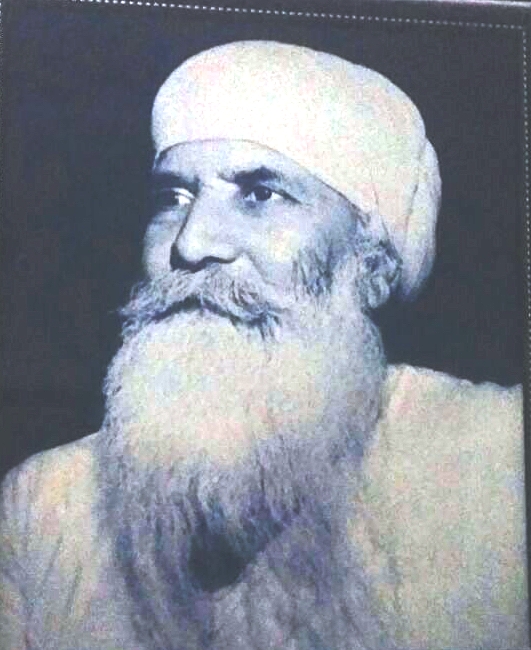By Shanti Kaur Khalsa, Sikh Dharma International

There are many heroic faces in 20th century India who served as patriots in the struggle for independence that have faded with the passage of time. Sant Hazara Singh Chhina was one of those great men.
Sant Hazara Singh was born in the early part of the 20th century somewhere in the vicinity of Lahore, in what is now Pakistan. When he was a young child, his village suffered a devastating earthquake and he was the lone survivor of his family. Small and alone, he walked to Lahore as a penniless orphan. He did not know the name of his family or his village, being too young when it was all destroyed.
At that time, the great Sant Baba Sohan Singh of the Baba Bidhi Chand Dal was in Lahore and in a chance meeting he adopted the young Hazara into his family. Baba Sohan Singh was the 10th leader of the Baba Bidhi Chand Chhina lineage. Baba Bidhi Chand was a great hero in the Sikh tradition and a devoted servant of Guru Hargobind Sahib. He is best remembered for his daring acts of bravery returning two beautiful stallions to Guru Hargobind, Gulbag and Dilbag, that had been stolen by the Mughals. It is written that Guru Hargobind declared, “Bidhi Chand Chhina Guru Ka Seena!” This means, “Bidhi Chand Chhina is the heart of the Guru.”
Sant Hazara Singh grew up near Amritsar in Sursingh Sahib, the historical village of Dal Baba Bidhi Chand. He served Baba Sohan Singh with love and devotion. He made his bed on the floor under Babaji’s cot in case he needed something in the night, and he served him throughout his life without fail.
Sant Hazar was a renown yogi and, when he was of age, Baba Sohan Singh sent Sant Hazara Singh to Gujranwala to set up his own takhsal (teaching center). It was here, from Sant Hazara Singh, that the young Harbhajan Singh first studied Kundalini Yoga. Yogi Bhajan often spoke of his teacher with devoted respect and speechless awe.
“Do you know that I still do not recognize the face of my grandfather and my teacher? I never ever looked up at their face, but I can accurately draw their feet. It is a state of consciousness, not what you know or what I know.” July 16, 1981
India at that time was under British rule, and many Sikhs were agitating for a free and independent nation. In 1934, the British tried to “disarm” the Sikhs, and most of the Buddha Dal, the warrior Sikhs, were imprisoned by the British in Lahore because they refused to give up their swords and kirpans. Baba Sohan Singh went to Lahore with his people to serve food and care for the Sikhs during their internment. Sant Hazara Singh joined the Dal in Lahore and was part of an agitation that landed him in jail for most of that year. He eventually won his court case and was released but he remained very involved with the freedom movement.
As the British were preparing to leave India, Jawaharlal Nehru visited Amritsar and the Nihungs of the Baba Bidhi Chand Dal. He asked Baba Sohan Singh to send a representative to Delhi to represent the issues of the Nihungs in the new Indian government. Baba Sohan Singh sent Sant Hazara Singh as their representative. He served in Delhi as part of Nehru’s team of advisors, wearing his distinctive long white robes and orange dumalla turban.
From Sursingh Sahib, Sant Hazara Singh moved to the village of Doraha and then to the village of Sanaur, where his descendants live today. This glistening jewel of a man has faded silently into history, as was his humble wish. But we, the students of Yogi Bhajan, remain grateful for the legacy of wisdom and ancient knowledge that he passed on.
